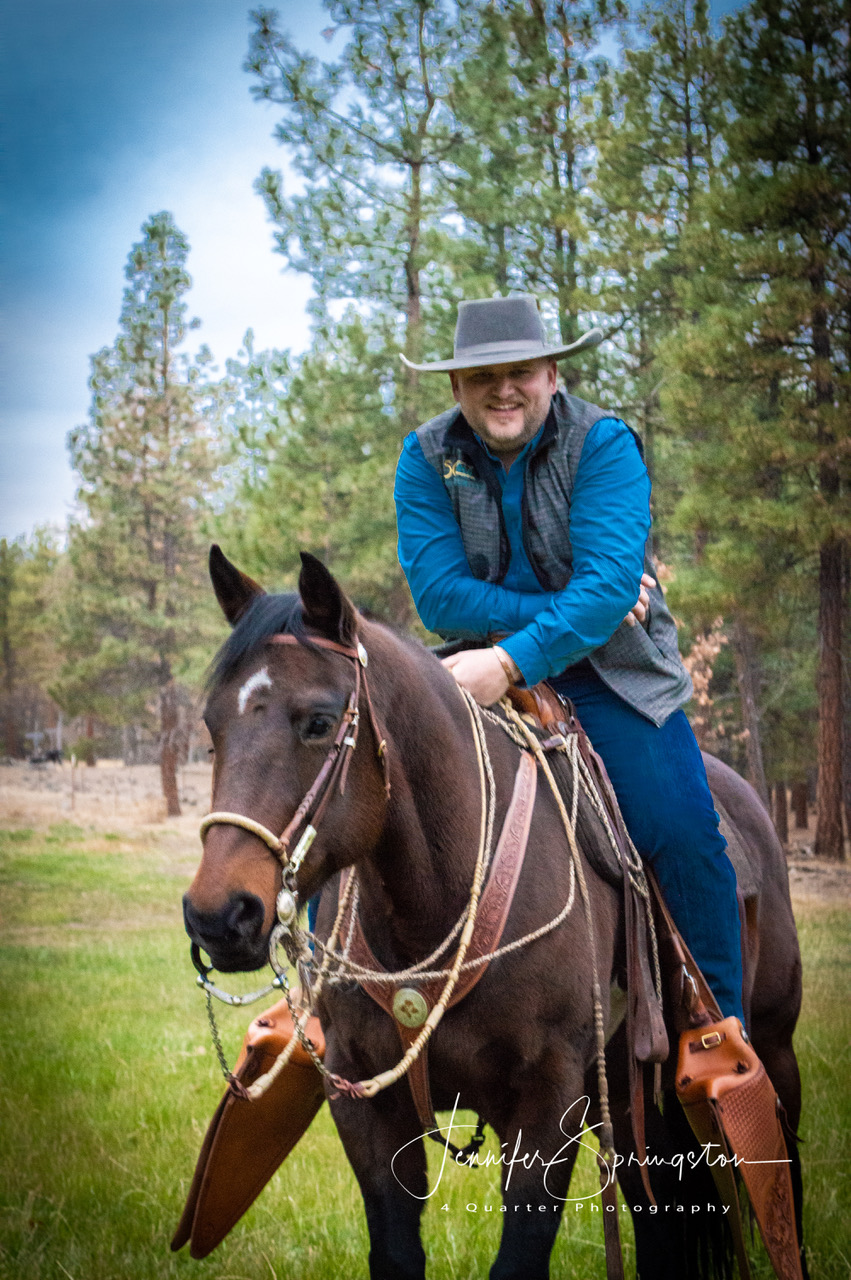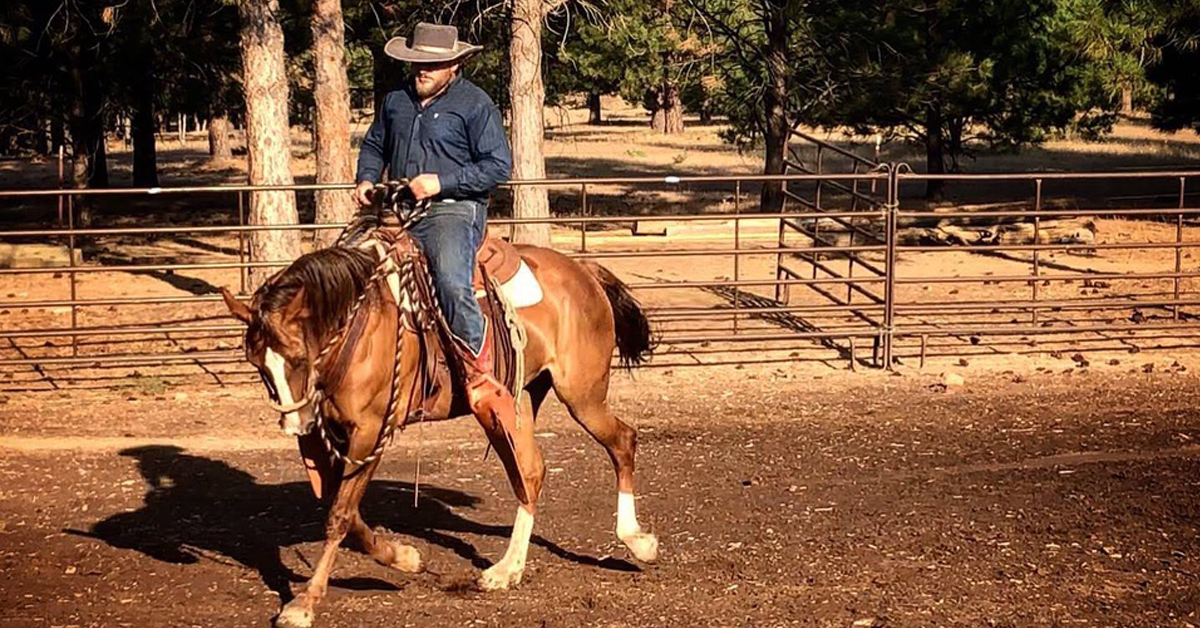What does it mean to rate your horse? So often in the world of horsemanship, the terminology is confusing. This is especially true when you cross the lines of discipline or background.
While terms can vary greatly, I hope to provide you with an understanding of three different factors that influence forward movement in your horse. They are rhythm, stride length, and impulse. While these factors are termed differently across the horse industry, understanding them is critical to the development of a well-rounded horse.
Rhythm
The word rhythm conjures images of a percussionist sitting at a drum set tapping out a beat. As the song progresses, he follows a tempo that is segmented by measures or bars. We use words like cadence, rhythm, tempo, or frequency to describe the meter at which the performance is given.
A horse also moves with a tempo. Each time a foot or combination of feet strike the ground it makes a beat. Instead of a bar or measure, we call a segment of beats a “stride.” Different gaits have different beat patterns and can occur at different speeds. A walk, for example, has four beats, a trot only has two, and a canter has three.
How fast the footfalls and strides occur should be something we as riders can manage and control. Picture a little pony trotting for all he is worth to keep up with a 17-hand warmblood who’s in a gentle jog. To keep up, the short-legged horse has to have twice as many footfalls (double time) to cover the same distance.
There are many methods and tricks for teaching a horse to rate and control its rhythm. The first step is understanding that the rhythm should be adjustable, and the horse should be encouraged to get in sync with his rider. Could that pony theoretically slow and match rhythm with the big horse; covering the same ground in fewer steps? Maybe, but additional “ingredients” are needed…
Stride Length
The next factor in how a horse moves is what we call stride length. This is the distance between where a foot leaves the ground and where the same foot lands in a given stride.
Picture a little kid following in their parent’s boot tracks. They have to adjust their reach to make it work. Of course, just like with rhythm, the gait will determine the scale we are measuring in (walk, trot, etc.). From nearly moving in place to a long-reaching stride, most horses have a high degree of adjustability to each gait that we can tap into.
The famous Triple Crown winner, Secretariat, was said to have a nearly 25-foot gallop stride, the ultimate in reach. Some well-schooled dressage horses can move slightly backward in piaffe in what would appear to be a negative stride length. The horse that can lengthen or shorten its stride in accordance with the aids of the rider is well on its way to being handy.
Remember our short little pony? Could he slow his rhythm by taking longer trot steps? Certainly, but to truly match rhythm with that big horse while maintaining the same speed, one more ingredient is needed.
Impulse
The last factor we will talk about is impulse (or impulsion). Think of impulse as the amount of effort or energy that is put towards a task. Words like energy, thrust, life, drive, try, or heart can be used to describe this concept.
Some horses are naturally a wellspring of impulsion. Others require constant prodding to raise a small amount. Similarly, some riders naturally inspire impulsion. Others can settle a horse down just by being present. The best horses and riders have learned to regulate and control this area to a high degree.
Since impulsion starts in the mind, often environmental factors or our chosen discipline may sabotage our ability to regulate. A timed event horse may struggle to walk, choosing instead to jig or prance just to release some of the energy his sport has taught him to have. On the extreme opposite of the spectrum, western pleasure is often criticized for its unnatural looking gates. In reality, they are the natural example of horses that have been taught to move with a slow rhythm, a short stride length, and very little impulsion. In either case, cross-training horses in other disciplines can be a huge benefit if a well-rounded usable horse is what you are after.
Thinking back to our earlier example, if the little pony takes huge steps, could he ever slow his tempo to that of the larger horse to keep up? If enough impulse is put into each step to adequately launch him through the air, he may be able to do so. Before you all rush out and buy a mini for your next eventing or ranch horse prospect, keep in mind that man has worked for centuries to develop breeds that are well suited for specific disciplines. They often naturally carry the required rhythm, stride length, and impulsion needed for the job.
As you consider the three factors we’ve discussed, try this experiment: walk in place, setting a rhythm with your feet. Then slowly add stride length (engaging and moving forward). Be sure to put the same amount of effort into each step and don’t change your rhythm, just step further. Increase your stride length as far as you can comfortably. Now reduce the length of each step until you are again walking in place. See how stride length determines how fast you cover the ground?
Next, keeping the same rhythm in place; begin to add impulsion to each step. Push off the ground harder and step higher with each stride. Congratulations, you too can piaffe!
As you play around with these three factors on foot, you will understand how they dynamically affect one another. Mastery of these concepts on horseback can take a lifetime to hone, but what a sweet thing when your horse gives you even the slightest ability to adjust these building blocks.
View the full April 2020 edition here

Teddy Franke from north central Oregon is a life-long student of the horse. Along with his family, he manages the horse program for Camp Morrow and operates Franke Equine; a horsemanship and farrier business. Teddy is a CHA certified master riding instructor and certifier. He is a graduate of Mission Farrier School, an ASHA Judge, a past AYHC board member, and is a sitting board member for the Certified Horsemanship Association. He loves competing in ranch roping and stock horse events. Check out his show “Live Equestrian” on Farm and Ranch TV or on YouTube. For more info visit FrankeEquine.com.





